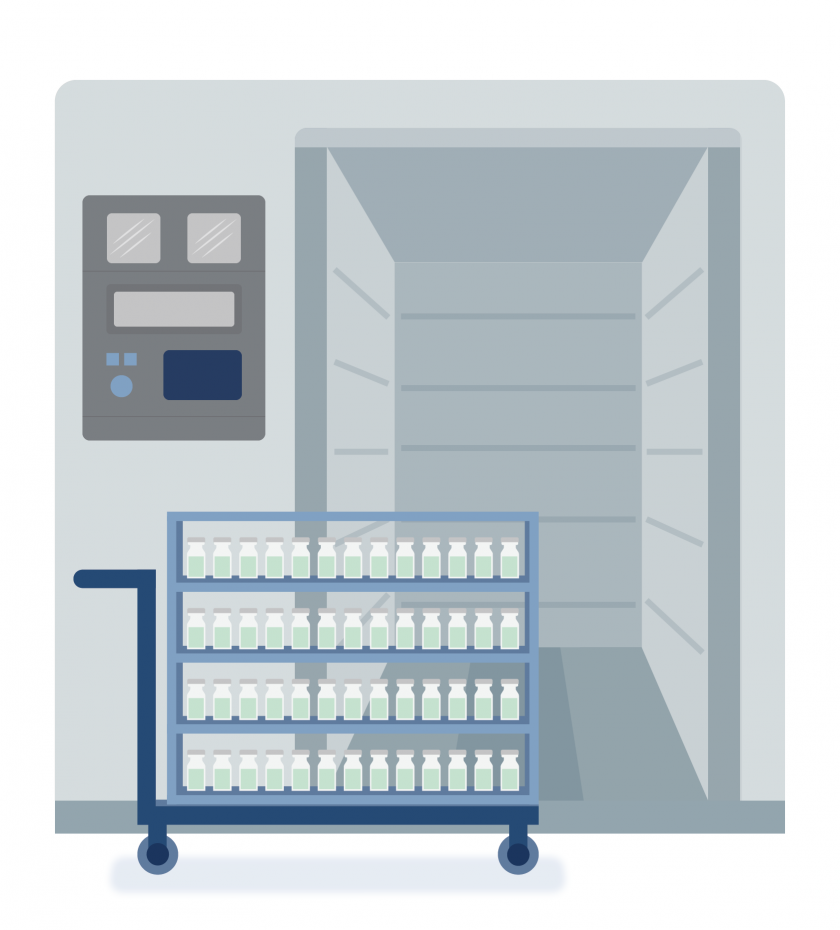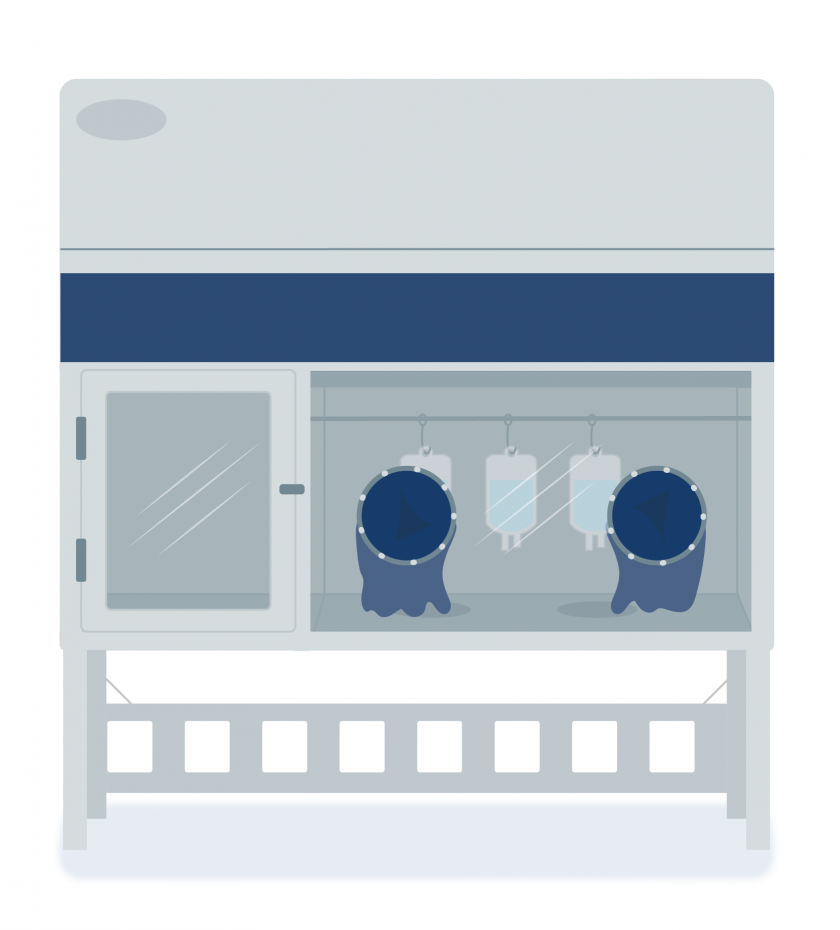Aseptic processing
Rather than sterilizing at the end of the process, aseptic processing involves sterilizing the manufacturing and packaging components prior to filling, and then assembling the drug product in a highly controlled environment; there is no sterilization at the end of the process. As such, a clearly defined sterile envelope is essential, and ideally, it is as small as possible. Adding unnecessary process steps to the aseptic environment creates excess complexity and cost.
To create a clean, contamination-free environment during aseptic operations, manufacturers employ uninterrupted, unidirectional HEPA-filtered air to create a Grade A/ISO 5 space. Aseptic fill lines also rely on barrier systems such as a Restricted Access Barrier System (RABS) or an isolator. These barrier systems provide a local Grade A environment and minimize the incursion of outside elements on the filling process.
With the rise of biologics as well as cell and gene therapies, there is an ever-growing list of drugs that require aseptic processing since they cannot withstand irradiation or a heat sterilization step.
Aseptic processing is often used for:
Although aseptic processing lacks a final sterilization step, thoughtful facility and equipment design, paired with robust quality processes, produce safe and effective drug products that would otherwise be incompatible with parenteral delivery.






